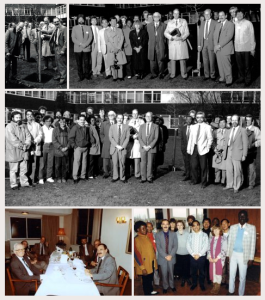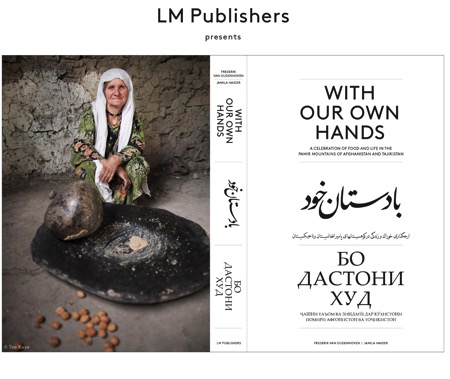- Is “heritage” just “heirloom” for “birds and animals”? I for one don’t think so. These apples are heritage, for example.
- Saving the Sea Island Red Pea. Which is a heritage cowpea, I think.
- 43 different types of heritage lettuce illustrated.
- Eat those heirloom pigs or lose them.
- Taste and nutrition go hand in hand.
- Soils are part of traditional agricultural heirloom systems.
- Heirloom shmeirloom, those food systems need some work if they are to deliver nutrition.
- The case for meat, heirloom or otherwise. And a whole series of posts on how to best feed all those cows.
- A herbal tea against malaria.
- The 10th SIRGEALC is on the horizon.
- A lot of people going to that will probably need these resources on implementing both the International Treaty and the Nagoya Protocol at the same time.
Nibbles: Grazing, Saving foodways, Amaranth, Fortification, Avocado threats, Kew job, Coffee photos, PhyloLink, Nutrition & ag, Remote sensing
- Grazing is good for grassland.
- Saving British food. And that of Ghana too, why not?
- Amaranth the next superfood? Maybe, but I vote we ban that silly term.
- The case for fortification: diverse diets are just too hard.
- And the latest fruit that’s in trouble is…the avocado.
- Wanna “[s]pend your summer in lovely Kew Gardens interacting with the public and opening people’s eyes and noses to the delightful world of spices”?
- Photographing the soul of coffee.
- Atlas of Living Australia adds nifty phylogenetic thingie.
- World Bank says “agriculture has a unique and critical role in improving nutritional status” so it must be true.
- Protecting forests from the air.
Nibbles: SDGs, Seed book, Magic millets, Medieval diets, Obsessive botanist, Cocoa melting gene, Double sake, Simcock, CIMMYT double, Popular breeder, Georgian wine odyssey, Cinnamon vid, Yam bean factsheet, Jackfruit bandwagon, Prairie berries
- Agriculture and the SDGs in one nice infographic thingy.
- Seeds: The Book.
- Seeds like millets?
- Those medievals really knew how to eat.
- An obsessive botanist? Whatever next.
- Deconstructing chocolate, one gene at a time.
- Sake 101. And for a more in-depth look…
- Joseph Simcox, self-described “Internationally Renowned World Food Plant Resource Authority” takes you “on a World Adventure to learn about little known edible plants!” On Facebook.
- A journey into the heart of CIMMYT. They’ll even screen your maize for you.
- The people’s breeder.
- Tracing wine to its source: Georgia.
- Harvesting cinnamon. With video goodness.
- FAO unleashes its mighty comms machine on another poor neglected crop: yam bean. Not many people hurt.
- Watch out jackfruit, you’re probably next.
- Or maybe saskatoon berries (Amelanchier alnifolia).
A pioneer passes
 Trevor Williams, one of the key early figures in the movement to conserve crop diversity, has passed away at 76. Mike Jackson has done a great job of summarizing Trevor’s pivotal contribution to the field over at his blog. Many have left touching tributes, including a number of people whose careers Trevor was instrumental in getting off the ground. I’m proud to be in that category. Mike is also working on obituaries for the Daily Telegraph, and for Genetic Resources and Crop Evolution, to both of which I’ll be sure to link in due course. The funeral will be held on Wednesday 22 April at 13:30, at St Chad’s Church, Handforth, Cheshire. Trevor’s sister Wendy has asked that a donation be made to the Millennium Seed Bank at Kew in lieu of sending flowers. Further details on Mike’s blog.
Trevor Williams, one of the key early figures in the movement to conserve crop diversity, has passed away at 76. Mike Jackson has done a great job of summarizing Trevor’s pivotal contribution to the field over at his blog. Many have left touching tributes, including a number of people whose careers Trevor was instrumental in getting off the ground. I’m proud to be in that category. Mike is also working on obituaries for the Daily Telegraph, and for Genetic Resources and Crop Evolution, to both of which I’ll be sure to link in due course. The funeral will be held on Wednesday 22 April at 13:30, at St Chad’s Church, Handforth, Cheshire. Trevor’s sister Wendy has asked that a donation be made to the Millennium Seed Bank at Kew in lieu of sending flowers. Further details on Mike’s blog.
A book worth waiting for

An old friend, Frederik van Oudenhoven, and his friend and colleague Jamila Haider, are deep in the proofs of what looks to be a wonderful book. With Our Own Hands “tells, for the first time, the cultural and agricultural history of the Afghan and Tajik Pamirs, one of the world’s least known and most isolated civilisations”. Should be a great read, with stunning photographs to accompany the local recipes, essays, stories and poetry. Better yet, generous donors are allowing 1800 copies to travel back to the Pamirs to be given to communities, schools, cooks and libraries.
If you’re interested, you should pre-order. Details here.